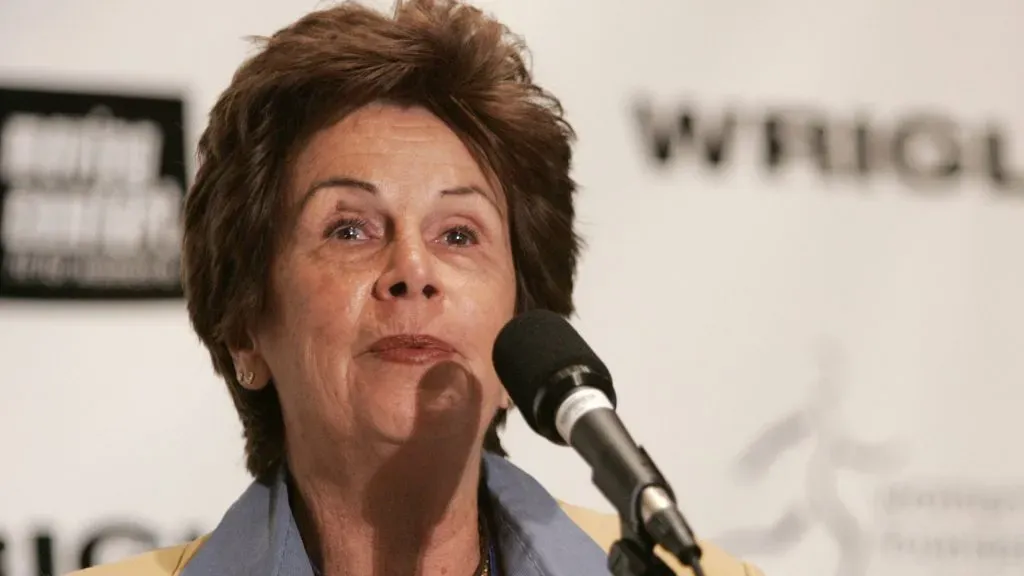In the world of tennis, some players shine brightly while others redefine the sport itself. Maria Bueno, a Brazilian legend, belongs to the latter category. Emerging in the late 1950s, she became one of tennis’ most elegant and accomplished champions, earning her place as one of South America’s first and beloved sports icons.
Born in São Paulo in 1939, Maria Esther Bueno took up tennis at just six years old while visiting a club with her family, even though the sport was not widely popular in Brazil. She remarked to CNN in 2016, “The main thing was football. But I just started playing and I just loved the sport. My father, my entire family played.”
Faced with financial difficulties and a lack of sponsorship, her family pooled resources from friends at the club to buy her “a one-way ticket” to Europe. “They said, ‘Come back when you can,’” she recounted to CNN.
Bueno quickly made her mark on the national circuit, breaking into the international spotlight in 1958 when she won the women’s doubles title with Althea Gibson at Wimbledon, as well as the women’s singles title at the Italian Open.
Maria Bueno playing in Wimbledon in the 1960s (Allsport UK)
In 1959, she became the first South American woman to win a Wimbledon singles title, triumphing over Darlene Hard in the final. She disclosed that the prize money was just 50 pounds in a voucher. That same year, she also captured the U.S. Nationals (now the U.S. Open) title and finished the season ranked World No. 1.
A Graceful Champion
Her playing style was characterized by fluidity and effortless strokes, establishing her as a top champion in the amateur era before the Open Era began in 1968. She stated, “It’s all instinct. I never had coaches or anything like that. I just had it. As you know, you either have it or you don’t.”
“I had a lot of natural talent, but I had to work hard too,” she expressed to The New York Times. Between 1959 and 1966, Bueno won seven Grand Slam singles titles, ten in doubles, and two in mixed doubles, reaching the peak of her career when she was ranked as the world’s top female player in 1959, 1960, 1964, and 1966.
Wimbledon Wardrobe Controversy
Beyond her prowess on the court, Bueno was a cultural icon, especially in Brazil. Known for her fashionable attire designed by Ted Tingling, she caused a scandal at the 1962 Championships by wearing a dress with a pink underskirt and matching underwear. The media labeled it a “wardrobe scandal,” but Bueno took it in stride. “There was a gasp from one end of the court,” she recalled, adding that the spectators at the other end were confused until she switched sides.
After the incident, she opted for undershorts that resembled the club colors, which outraged the committee and prompted the introduction of a strict all-white clothing rule for competitors. By 1963, Wimbledon mandated that all players wear “predominantly white throughout” to avoid disqualification, a rule that was eventually relaxed in 2023 to allow women to wear dark undershorts for comfort.
Challenges and Contributions
Injuries plagued Bueno’s career during the late 1960s. She faced eight months of confinement due to hepatitis in 1961 and underwent knee surgery in 1965. Severe cramps and arm pain led to multiple surgeries, sidelining her from 1969 to 1974.
Her final Grand Slam title was a doubles win at the U.S. Open in 1968, with her last tournament victory at the Japan Open in 1974. She officially retired after the 1977 season, although she made a brief return in 1980 to compete in mixed doubles at Wimbledon.
Post-retirement, she remained active in tennis as a commentator in Brazil, sharing her insights and advocating for the sport’s growth in South America. Additionally, she established a tennis clinic and academy to nurture young Brazilian talents.

Maria Bueno in 2004 (
A Lasting Legacy
Maria Bueno passed away in 2018 at the age of 78 after a battle with cancer, but her legacy endures. She is Brazil’s most celebrated tennis player, having been inducted into the International Tennis Hall of Fame in 1978. In a sport primarily dominated by European and American players, she forged a path for South American athletes, particularly women.
In 2016, part of the Tennis Olympic Stadium in Rio was named in her honor, a recognition she expressed great pride in. “First, because I’m a woman. You know, everything, sorry to say, but everything is made for the men. And having my name there while I’m still around, I think that’s fantastic,” she told CNN.
Maria Bueno is remembered not only for her achievements but also for her graceful style of play. To many in Brazil, she is viewed as a national treasure—an innovator whose elegance, strength, and charisma irrevocably transformed the game of tennis.


